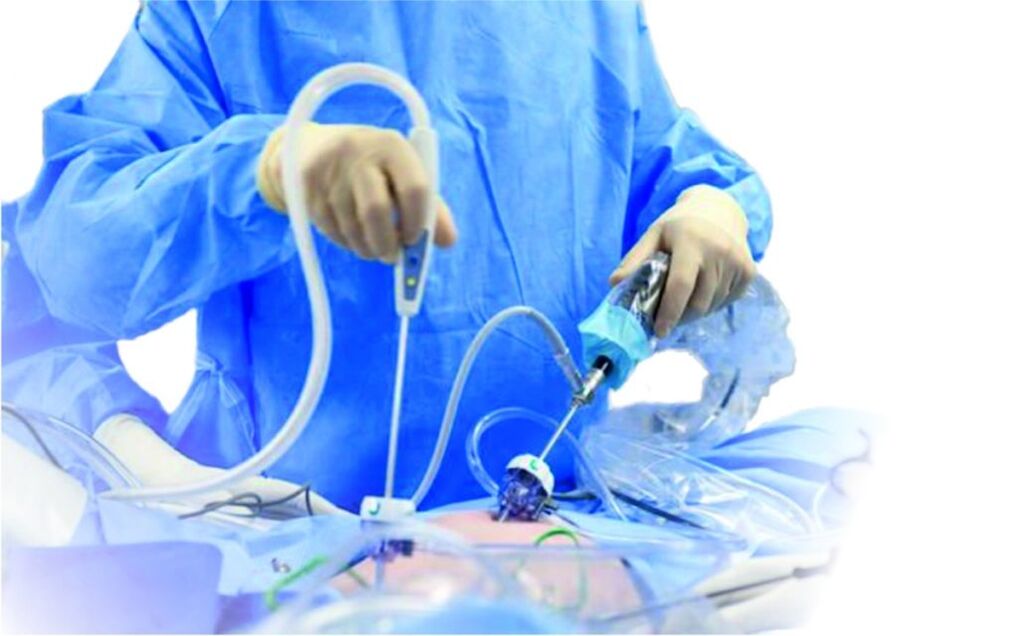Prostatitis is an inflammatory disease of the male prostate gland located directly under the bladder and is a secondary part of the genitals.
Every 7 men over 35 suffers from prostatitis, and with each naked risk of developing an inflammatory process in the prostate increases under the influence of external and internal factors.
Reasons

The inflammation of the prostate gland can develop for several reasons, doctors distinguish the main thing about them:
- Violation of the microcirculation of blood in the pelvic organs: this leads to stagnant processes and helps increase the size of the prostate gland. Stagnant processes are facilitated by the obesity and behavior of a sedentary sedentary lifestyle.
- The entry of bacteria, viruses or protozoa into the tissue against the bottom of an acute or chronic inflammatory process in other organs that flow in the body, such as angina, gonorrhea, urethritis, cystitis, flu, pyelonephritis can cause prostatitis. The causal agents of the infection can enter the prostate with a blood flow and lymph if there is an infection in remote areas and organs.
- The injuries and bruises of the soft tissues of the abdomen, perineum and external genitals: this leads to edema and the deteriorated blood circulation in the damage zone;
- Body hypothermia.
- Chronic constipation.
- Hormonal disorders
- Tormentous sex life or, on the contrary, absent sex life is harmful, both frequent sex (more than 1 time), as well as rare intimate relationships (less often 1 time per week), since this leads to the exhaustion of sexual glands or stagnation in the prostate.
Prostatitis symptoms
Distinguish between the acute and chronic form of the disease.
Acute prostatitis is characterized by a sudden beginning in the context of the general well, which is clinically accompanied by the following symptoms:
- chills and weakness;
- general discomfort;
- greater irritability and nervousness;
- increase body temperature (no more than 37. 5 degrees);
- throw or cut pain at the bottom of the abdomen and in the perineum;
- Frequent urinate to urinate while preserving the sensation of incomplete emptying of the bladder;
- Pain and difficulties of River with the intestinal movements.
In the absence of diagnosis and timely treatment, acute prostatitis can be complicated by a purulent process and the release of PU of the urethra during the urine.
Signs of chronic prostatitis
In the transition from the disease to a chronic form of the course, the clinical signs of prostatitis decrease and the patient seems to be a recovery. The characteristic features of the chronic inflammatory process in the prostate gland are burning along the urethra with irradiation to the crotch, which can be improved during urine and defecation. Little by little, the disease progresses and causes helplessness. Chronic prostatitis implies periods of remission and exacerbation, but even in times of exacerbation, the symptoms will be erased, not as pronounced as in an acute way. The following symptoms appear clinically:
- difficulties with an erection;
- the inability to complete sexual relations with ejaculation;
- decrease in sexual desire;
- excretion of urethra mucus with a mixture of white flakes;
- an incomplete emptying of the bladder;
- Pull pain in the lower back, pubis and groin;
- A weak urine current: this is observed as a result of reducing the light of the urethra at the bottom of its compression of a enlarged prostate.
The slow chronic inflammatory process in the urethra is irritating for the nerve endings of the pelvis and causes a constant urination, especially at night. Many men are ashamed to see a doctor with such a delicate problem, which increases the risk of developing complications as serious as complete erectile dysfunction, infertility and even prostate cancer.
In addition, from the focus of a chronic infection in a prostate with a blood flow and lymphs, pathogens enter the kidneys, causing acute inflammation, urinary retention and increases the risk of renal failure.
The constant accumulation of urine in the bladder and the urethra creates favorable conditions for the formation of salts of salts, and then stones, very often prostatitis in men proceeds in parallel with urolithiasis.
Diagnostic methods
The diagnosis, treatment and prevention of prostatitis is performed by a medical doctor. To make a diagnosis, determine the shape and cause of the inflammatory process in the prostate gland, several exams are prescribed:
- Palpation of the prostate is carried out through the rectum and allows it to detect an increase in size, pain, release of pus or mucus after palpation;
- Small discharge of the urethra: the resulting material is sent to study the laboratory;
- Urine analysis is general, etc. ;
- Ultrasound of pelvic organs and the prostate gland.
If it is suspected that the pathological process extends the pathological process to the patient, the patient is also carried out by cystoscopy: examination of the bladder walls using a flexible device equipped with an optical system at the end.
In the diagnosis of prostatitis, it is very important to differentiate the pathological process of the adenoma of the prostate and other urological diseases with a similar clinical course.
Treatment

The treatment of the acute and chronic form of prostatitis differs, so it is strongly recommended to patients who do not medulize.
The acute form of non -bacterial prostatitis is treated in an integral way using herbal preparations and anti -inflammatory medications.
Acute bacterial prostatitis treatment
The principles of therapy for the acute form of bacterial prostatitis depend directly on how pronounced are the symptoms of the disease.
A distinctive characteristic of bacterial prostatitis is the acute beginning and the signs that quickly increase from body poisoning: nausea, vomiting, headache, high body temperature. The process of emptying the bladder is accompanied by cutting pains at the bottom of the abdomen and in the perineum, which occur on the lower back. Very often the purulent process is joined and the abscess develops.
The treatment of acute bacterial prostatitis is carried out in a hospital, since the patient's condition can be extremely serious. The therapy consists of the complex approach:
- The patient must observe bed rest;
- Antibiotics are prescribed: macrolides, fluoroquinolones, cephalosporins;
- Preparations that improve microcirculation in the blood in pelvic organs are selected. They provide the output of lymphatic and venous blood, which reduces the severity of edema and the inflammatory process in the prostate;
- Inside the sentence, drugs of a group of non -steroidal anti -inflammatory drugs are shown. These medications not only reduce the inflammatory process, but also eliminate pain syndrome;
- Analgesics: You can take tablets inside or introduce rectal candles in the rectum;
- To eliminate body poisoning, a physiological solution of sodium with glucose is prescribed intravenously.
Important! Prostate massage is strictly prohibited, since the risk of sepsis is high.
Surgical treatment
Surgical intervention for prostatitis is only required if the patient develops a strong delay in urine and there is no way to empty the bladder. It cannot do without surgery and in case of an abscess of the prostate gland.
The course of the treatment of prostatitis lasts 14 days, after which the patient again performs an integral exam to evaluate the effectiveness of the therapy. If necessary, the treatment course extends and adjusts.
Chronic treatment
The treatment of chronic prostatitis differs and depends largely on which stage of the course is the pathological process. In case of exacerbation of the inflammatory process, therapy is carried out in a similar way, as in acute prostatitis.
The treatment of chronic prostatitis during remission is as follows:
- The intake of the non -steroidal anti -inflammatory drug course. Present drugs 2 times a day of at least 3 days, sometimes up to 5 days.
- Preparations that contribute to the improvement of venous and lymphatic output.
- Immunomodulators.
- Antidepressants and sedatives help normalize sleep, eliminate irritability.
- Polyvitamin complexes rich in zinc, selenium, vitamins of group V.
In the phase of the remission of the inflammatory process of the prostate, the patient is shown a physiotherapeutic treatment:
- Prostate massage;
- ultrasound;
- electrophoresis;
- Magnetotherapy;
- microwave hyperthermia.
Surgical treatment of chronic prostatitis
With careless chronic prostatitis, the patient sometimes needs surgery. It can be carried out in two ways:
- Transuretral resection;
- Prostatectomy.
Transuretral resection
This method of surgical treatment refers to minimally invasive interventions, although it is performed under general anesthesia. During the procedure, a resectoscope is introduced under the urethra, through which electric power pulses are supplied. These electrical impulses act on the principle of an electrical noise and partially eliminate the tissue of the prostate gland. A great advantage of this method of intervention is the lack of blood loss, since the electric waves not only eliminate the modified prostate tissues, but also immediately treat blood vessels, avoiding bleeding.
Transuretral resection significantly facilitates the patient's condition: after surgery, urination is restored, man no longer burns in the crotch, does not jump into the bathroom at night. Erectile function and normal ejaculation are also restored. A complete doctor is controlled by a doctor on the monitor screen, so the risk of complications during operations or immediately later is minimal.
Prostatectomy

Prostatectomy is a severe abdominal operation and is always associated with patient risks. During the operation, the doctor completely eliminates the prostate gland or most. The recovery period is 4 to 6 weeks, there is a high risk of developing postoperative complications, but sometimes this method of surgical intervention is the only way to relieve the patient's condition and eliminate the consequences of the severe course of prostatitis.
Other methods of treatment of chronic prostatitis
Other methods to treat a chronic form of prostatitis include:
- Hirudotherapy - or treatment with leeches. The medical leeches are installed in the inflammation zone, which in the process of their actions is released with a substance of saliva that puts the blood in order, which eliminates the stagnant phenomena and quickly relieves the inflammatory process. Sanguijuelas are used only special, medical and individual for each individual patient. After the procedure, the doctor puts the bleeding used in a dispute in which she dies. It is optimal to pass at least 5 courses of Hirudotherapy.
- Cryodstruction: liquid nitrogen is used. This treatment method is shown to patients who are poorly borrowed from pharmacological therapy, and the operation is contraindicated for some reason.
- Microwave therapy in a special way: electromagnetic waves affect the prostate gland. After 1 procedure, tissue edema decreases, blood circulation is normalized and stagnation is eliminated. After performing the course of electromagnetic therapy, the patient completely restores urination and erectile function.
- Ultrasound wave treatment: it allows you to quickly stop the inflammatory process that occurs in the remission phase, and ultrasound therapy is not carried out during exacerbation. To improve the therapeutic effect, medications can be used additionally, which, under the influence of ultrasound, directly penetrates the prostate tissue.
- Urethra stenting: The essence of the procedure is to install a special stent in the urethra, which expands the light of the urethra and promotes the normal urinary output. Despite the effectiveness of the procedure, the urethra stent only eliminates the clinical symptoms of prostatitis, but does not save the patient from the chronic inflammatory process.
Consequences and complications
In the absence of qualified therapy, prostatitis progresses rapidly, enters the chronic form of the current and threatens a man's health with his serious complications, which include:
- Urolithiasis;
- Pyelonephritis;
- abscess development;
- the spread of the inflammatory process to testicles and ropes of seeds, which leads to infertility;
- erectile dysfunction and helplessness;
- Necrotic changes in the tissues of the prostate gland.
Sometimes, for a long time, prostatitis and chronic stagnant processes give an impulse to the degeneration of the disease in the adenoma and then prostate cancer.

































